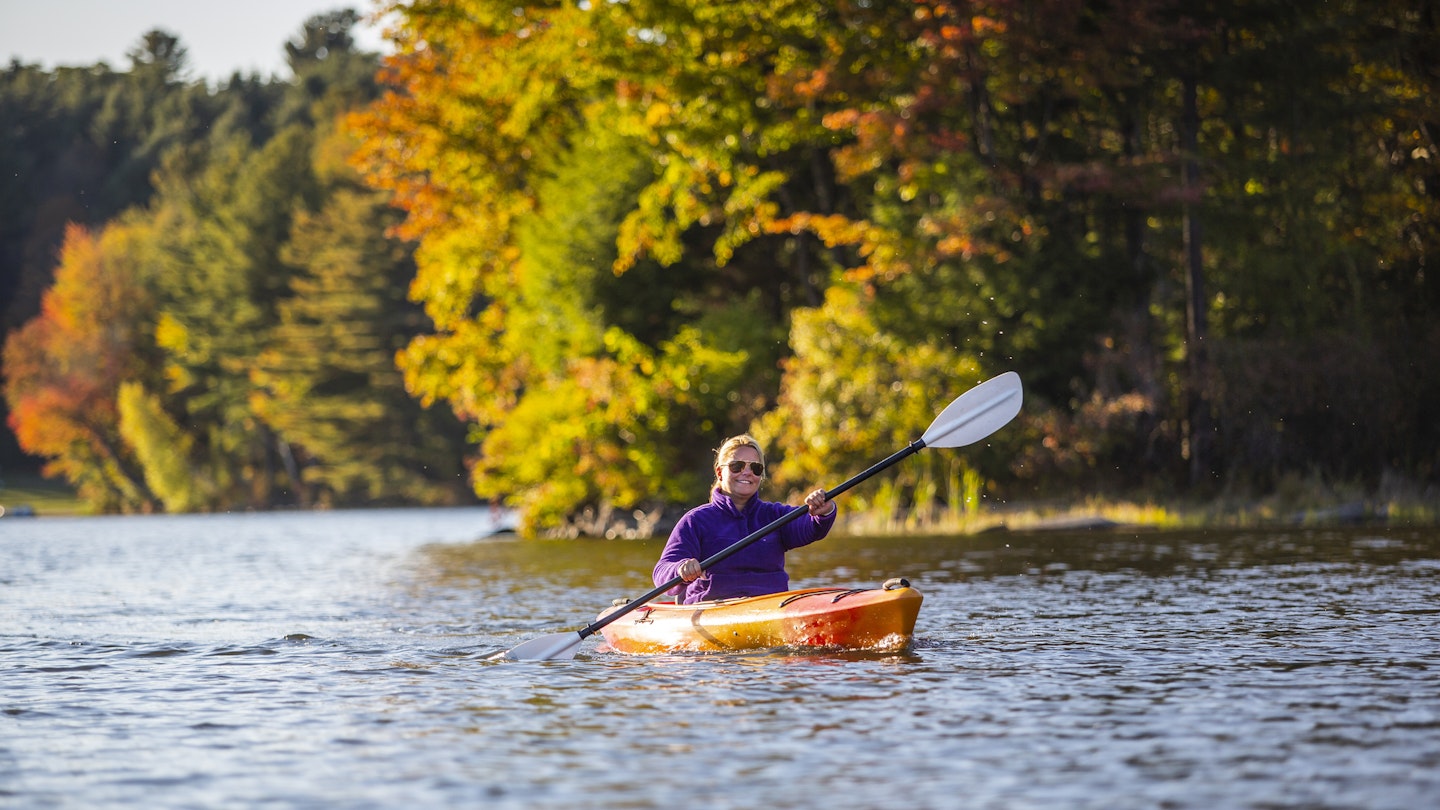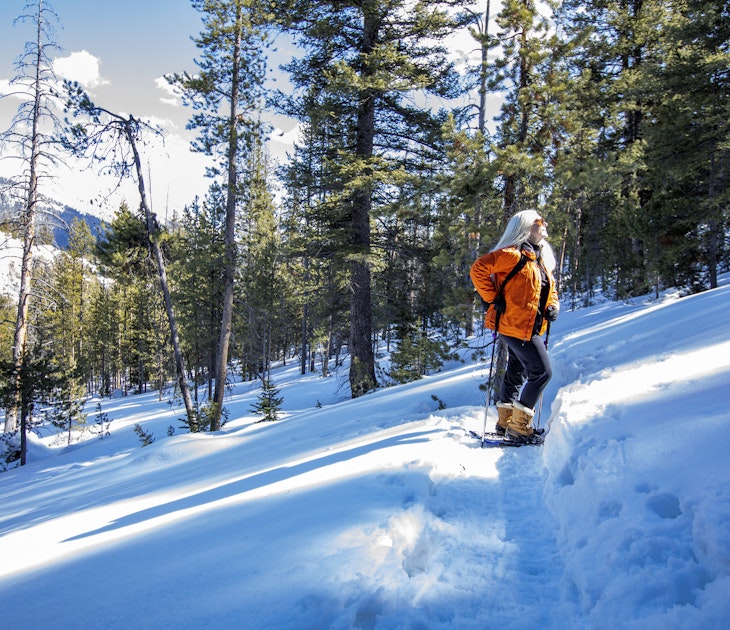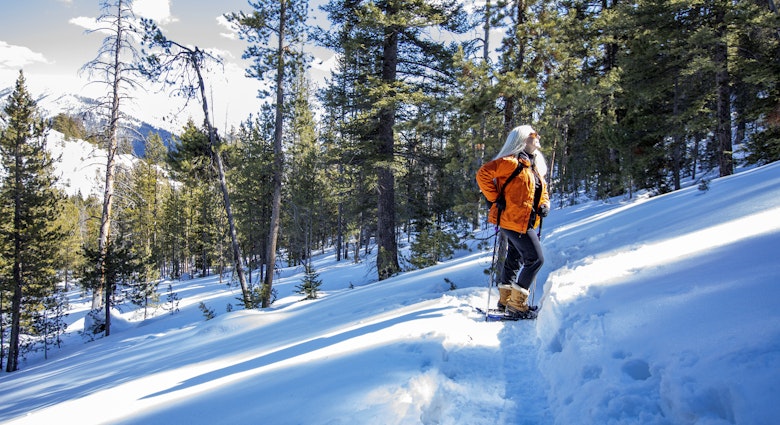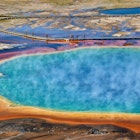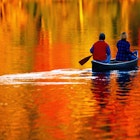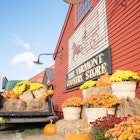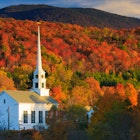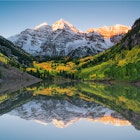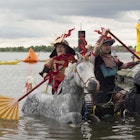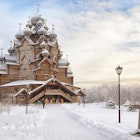Every season is a great season to visit Vermont. In addition to skiing and snowboarding in the winter, outdoor enthusiasts can hike, bike and fish in the warmer months. Year-round, the state has a thriving cultural scene with performing arts, museums and galleries.
A founder of the locavore movement, Vermont is a major culinary destination. The Green Mountain State’s farmers and chefs – the proud producers of meat, cheese, ice cream, chocolates, wine and spirits – create farm-to-table meals that rival anywhere in the US.
You could spend an entire week simply taking scenic drives around the state, taking in the beautiful scenery, covered bridges, lakes and state parks. Should you end up touring all of the towns and cities in the state, you could become the next member of the 251 Club, an organization dedicated to celebrating all of Vermont's 251 towns and cities.
These are the best things to do in Vermont this fall. Let them inspire you to plan your next trip.
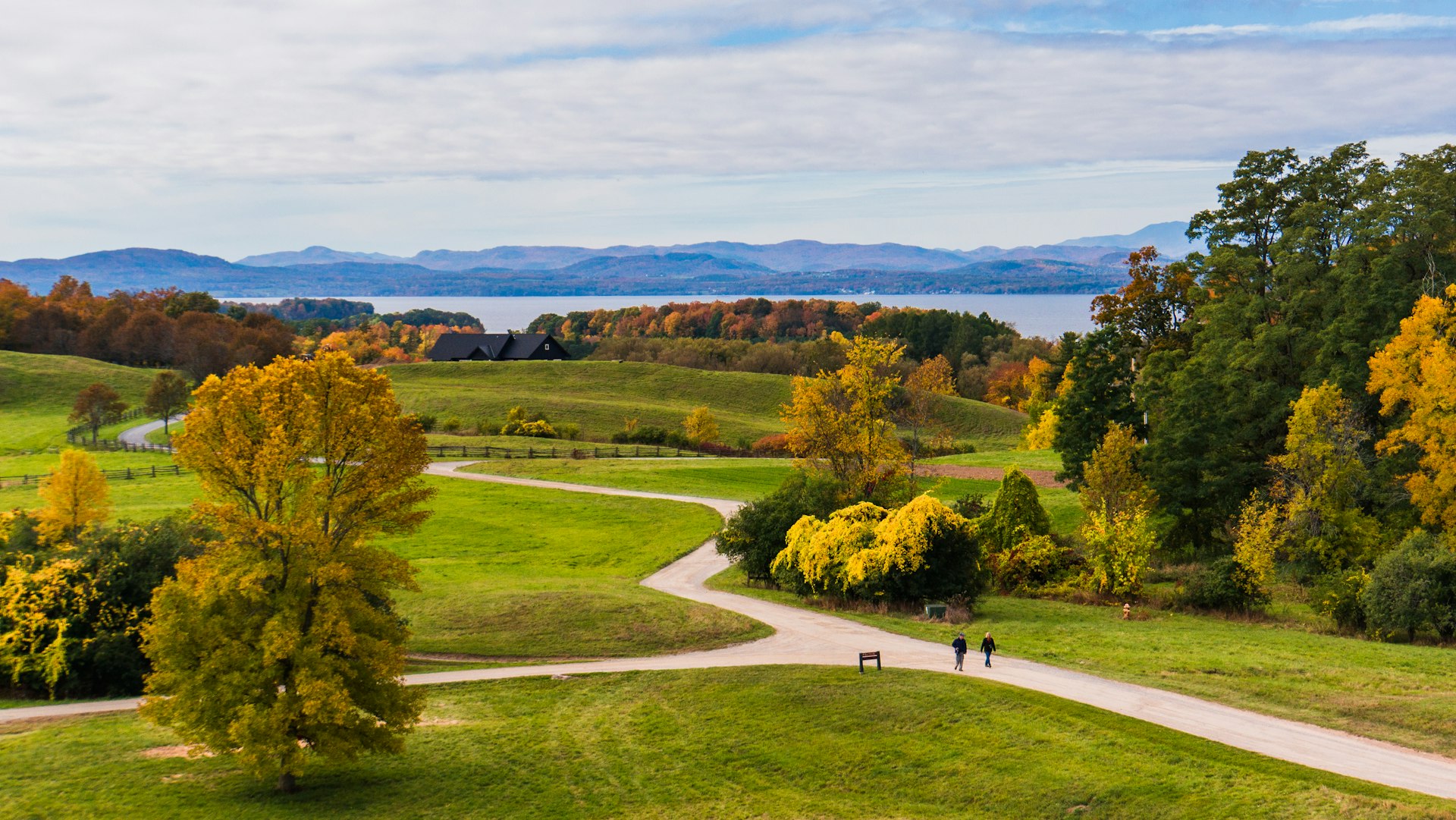
1. Visit Shelburne Farms
On the shores of Lake Champlain, Shelburne Farms is one of the most magical places in Vermont. Once the country estate of railroad mogul William Seward and Lila Vanderbilt Webb, the 1400-acre working farm is now open to the public.
Designated a National Historic Landmark in 2001, the campus encompasses a grass-based dairy of Brown Swiss cows used to make the farm's award-winning cheddar cheese and an organic garden market, plus maple sugaring and lumber operations.
Visitors are welcome to explore the Farm Barn, which houses animals, a bakery and a cheesemaking facility, and the Coach Barn, which is largely used for events and meetings. Miles of spectacular walking trails take you through the property and down to the waterfront.
Planning tip: You can stay and dine at The Inn, the original summer home of William and Lila, which is now a 24-room hotel, open from May through October.
2. Learn about Vermont’s role in the Underground Railroad
Located in Ferrisburg, the Rokeby Museum is a National Historic Landmark. Four generations of the Robinson family lived and worked on this 90-acre Merino sheep farm for more than 200 years.
As abolitionists, the Robinson family provided shelter in the 1830s for two formerly enslaved people who were on the run. The museum's exhibit called "Free and Safe" brings to life the role Vermont played in the Underground Railroad.
The historic farmstead, comprising nine outbuildings, the original family home and hiking trails, sits on 90 acres of land.
Planning tip: The museum is open from mid-May through late October.

3. Watch out for "Whales Tails"
When driving along Interstate 89, keep an eye out for "Whales Tails" between exits 12 and 13. Carved out of 36 tons of African black granite, the sculpture formally named Reverence is easy to spot. You can get up close to the two 13ft-high tails via a 1.3-mile walking path in South Burlington's Technology Park. During the holiday season, they are lit up with Christmas lights.
But why do these outdoor sculptures depict whales' tails in a land-locked state? Vermont's Champlain Valley was once underwater and part of the Champlain Sea, an extension of the ocean. Proof that whales once inhabited the area was solidified when a fossil of a beluga whale was found in the town of Charlotte in 1849.
4. Sample a creemee
What’s known as soft-serve ice cream elsewhere in the country is called a creemee in Vermont. Slightly creamier than hard ice cream, this sweet treat comes in traditional flavors like chocolate and vanilla, but the most sought-after is maple. There's even a Maple Creemee Trail dedicated to finding the best one in the state.
Try creemees at snack shacks, roadside stands and gas stations – they're all good. However, some of the best can be found at Little Gordo in Burlington, the Village Creeme Stand in Bristol and the Creemee Stand in Wilmington.
Local tip: Some of the most creative creemees are at Canteen Creemee Company in Waitsfield. Order the Bad Larry, a towering cone of maple sprinkled with maple crystals and topped with maple cotton candy.
5. Roll up your sleeves at Billings Farm
Established in 1871, Billings Farm is one of the nation's oldest registered Jersey dairy farms. Visitors can get a sense of rural farm life at this still fully working farm. In addition to the Jersey cows, the farm has draft horses, steers, oxen, sheep, pigs, chickens and goats.
This outdoor history museum has 200 acres to explore, so allow half a day to tour the educational exhibits, the barn and the 1890 Farm Manager's House. The Dairy Bar is the perfect spot to get ice cream or cider donuts and hot apple cider in the fall.

6. Stroll in the middle of a lake
It's rare to find a place where you stroll into the middle of a lake, but in Vermont, the Colchester Causeway allows you to do just that. Built out of white marble from quarries in Rutland, this former railroad bed is now a 10ft-wide gravel path with some of the most scenic views in the state.
The section of the Island Line Trail connecting Colchester to South Hero is excellent for biking or walking. About two-thirds of the way out, a 200ft cut allows for boat traffic, including the Island Line Trail Bike Ferry, which lets pedestrians and bikers cross and continue on to South Hero.
7. Buy local produce at weekly farmers markets
Once a place to buy local produce, farmers markets are now a full-fledged outing. In addition to supplying fresh vegetables, meats, cheeses and baked goods, they have become a place for the community to gather, eat and shop.
With almost 85 weekly farmers markets in Vermont, fans of farm-to-table goods can stroll through open-air markets and sample some of the best food Vermont has to offer. It is a wonderful opportunity to meet the many farmers who grow local food.
Planning tip: Waitsfield Farmers Market, Craftsbury Farmers Market and Burlington Farmers Market are three of the state's largest and most popular markets.

8. Sing in the hills at the Trapp Family Lodge
The hills of Stowe are still alive with the sound of music. More than 70 years ago, Georg and Maria von Trapp discovered Vermont and made it their home. Today, the Trapp Family Lodge is an Austrian-style hotel decked out with family photos and memorabilia. Start your visit with a 90-minute history tour to learn the real story of the von Trapp family, which differs quite a bit from The Sound of Music version.
Over the years, the resort has grown and includes a beer hall, a brewery and a coffee house with fresh-baked Austrian pastries. The property also has miles of trails for mountain biking, hiking, snowshoeing and cross-country skiing.
Planning tip: In the fall, the lodge hosts Oktoberfest, and in the winter, you can take a horse-drawn sleigh ride through the pastures.
9. Stop by a Vermont general store
Several historic general stores still exist in Vermont. They’re located in town centers and serve as a place to pick up provisions and as gathering places for the community. The renowned Warren Store is one of the most famous. Housed in a building from 1839, the store has shelves stocked with local products and Vermont specialty foods.
It’s a great place to poke around for souvenirs. You can find maple syrup, hot sauce, cheeses, jams, jellies, craft beer, home goods and fashion accessories.
Planning tip: Enjoy sandwiches from the deli on the deck overlooking the Mad River.
10. Explore ECHO, Leahy Center for Lake Champlain
Just steps from Burlington's waterfront, ECHO, Leahy Center for Lake Champlain is dedicated to understanding Lake Champlain, its animals and plants.
This science museum feels like an aquarium where you can explore a life-sized recreation of a famous shipwreck, learn about hundreds of other wrecks in Lake Champlain and try to figure out whether the Legend of Champ is a myth or reality.
Check out more than 100 interactive exhibits, as well as 70 different fish, reptile and amphibian species, such as snapping turtles, a black rattlesnake and pumpkinseed fish.

11. Drink up Vermont's craft beer scene
While Vermont isn't the birthplace of craft beer, it's certainly been churning out tasty home-brewed pints for a long time. When Vermont Pub and Brewery opened its doors in Burlington in 1988, it began a movement in the state.
The number of brewpubs, microbreweries and craft brewers has grown to more than 60, which is roughly 11.5 breweries per resident – a lot of beer for a small state.
The challenge is how to try them all while you visit. While names like Magic Hat and Heady Topper are synonymous with Vermont craft beer, many smaller breweries are worth putting at the top of your list. An excellent way to do that is a craft brew tour where you can leave the driving to someone else.
12. Discover Vermont's islands
Although Vermont is known for being a mountainous state, it’s also home to an archipelago of islands in Lake Champlain worth visiting. Because the islands are mostly flat, they are good for cycling. Home to several state parks, such as Grand Isle and Knight Point, Lake Champlain is an excellent place to go camping with a waterfront view.
Cross over from the mainland via Route 2 and stop in South Hero at Allenholm Farm, Vermont's oldest commercial orchard with a petting paddock, maple creemees and a farm store. Afterward, check out Snow Farm Vineyard and make dinner reservations at Blue Paddle Bistro.
Further north, stop by Hero's Welcome, a legendary general store with yummy sandwiches and picnic tables overlooking the lake. It is also an excellent place to go ice skating in the winter. Stay at North Hero House or book a boat tour around the islands.
Planning tip: Before crossing over into Canada, spend an afternoon at Alburgh Dunes State Park, one of Vermont's largest beaches.
13. Hit the slopes at Vermont’s Ski and Snowboard Museum
Vermont is famed for producing many Olympic-caliber skiers and snowboarders, so it makes sense that there's a museum dedicated to the history of the sports. The Vermont Ski and Snowboard Museum in Stowe has more than 8000 items in its collection, including hundreds of pairs of skis, snowboards, and bindings and mechanical equipment used for ski operations like snowmaking and races.
Exhibits are dedicated to skiing and snowboarding history, showcasing the sports' legends, slopeside fashion over the years and how pastimes have changed over the decades.

14. Sample some maple syrup
Nothing says "made in Vermont" more than maple syrup. With more than 1500 sugarhouses, Vermont produces approximately 2 million gallons of syrup a year. If you plan to travel to Vermont in the spring, be sure to visit a sugarmaker.
Most sugarhouses are open to the public in March and the beginning of April when the temperatures have warmed up and the sap is flowing. They’re happy to show how maple syrup is made, teach you about the different grades and offer samples.
In addition, they serve Sugar on Snow, a sweet treat consisting of hot syrup drizzled over packed snow, which turns it into a taffy-like consistency. It's served with a donut and dill pickle.
15. Tour the Lincoln family’s summer home
Plan a visit to Hildene, the summer home of Abraham Lincoln's only son who lived to adulthood. This property in Manchester has a lot to explore. Robert Todd Lincoln, the Pullman Company president, and his wife, Mary, built their family estate at the turn of the century.
The home remained in possession of the Lincoln clan until 1975, when Abraham Lincoln's great-granddaughter, Peggy Lincoln Beckwith, passed away.
Today, the property encompasses the 8000-sq-ft family mansion and 14 historic buildings. You can tour the mansion, carriage barn, a 1903 Pullman car, goat dairy and chevre cheese-making facility.
Planning tip: If you love peonies, visit in late spring or early summer when thousands of these fragrant flowers bloom in the formal garden.

